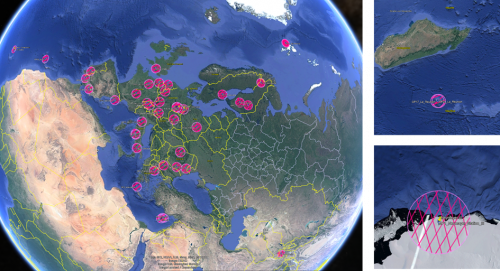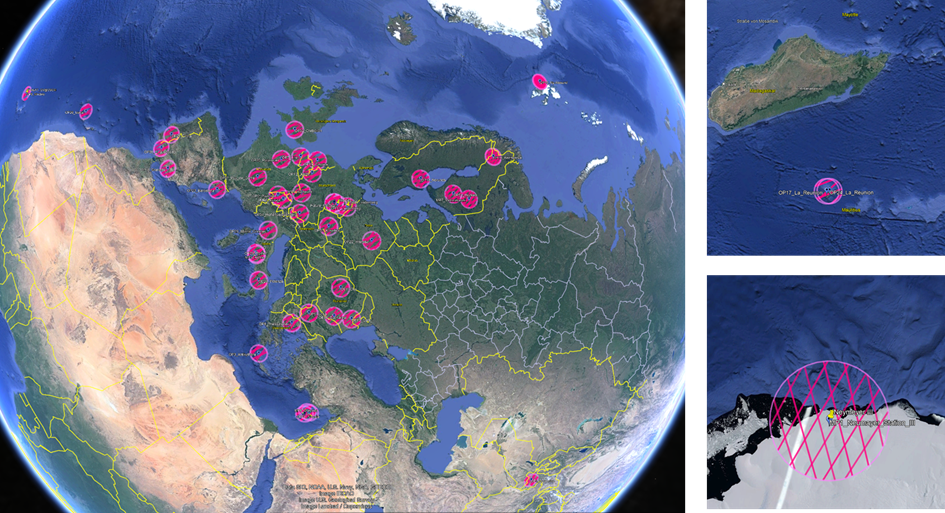National Facilities


In the framework of the ATMO ACCESS pilot activities for internal stakeholders, a project has been initiated to support the validation of the European Space Agency's (ESA) EarthCARE mission.
EarthCARE is an Earth Explorer Mission scheduled for launch in May 2024 that will perform observations of the atmosphere using a high spectral resolution lidar, a Doppler cloud radar, a multi-spectral imager and a broadband radiometer. It can thus be considered as a space-based ACTRIS aerosol and cloud remote sensing observatory.
To meet the extensive validation needs of these novel spaceborne observations, the ATMO ACCESS pilot was utilized for a dedicated project, resulting in a consortium of 46 participating observatories plus the ACTRIS Central Facilities, i.e., the ACTRIS Topical Centres CARS & CCRES and the ACTRIS Data Centre's Unit CLU & ARES. A sketch of the planned 16-month activity is shown in Fig. 1.

The main goal of the initiative was to establish a near-real-time work and data flow to be ready at EarthCARE launch for immediate validation activities. This involves carrying out measurements at the ACTRIS National Facilities and other associated stations, performing quality assurance tests that are analysed and approved by the ACTRIS Topical Centres, and implementing a data flow in near-real time from the observatories to the centralized data processing units and from there, with a preliminary but ad hoc quality control, to the ACTRIS data portal. From there, ESA's Validation Data Centre (EVDC) will be able to harvest the metadata of the observations collocated with satellite overpasses to provide them to ESA experts who can then use the data for validation analysis. These efforts include the harmonisation of data formats and further QA/QC procedures. A rehearsal campaign using simulated overpasses of EarthCARE (as shown in Fig. 2) was conducted from October to November 2023 to test the established workflow and identify potentials for improvements. Real validation activities are planned with the launch of EarthCARE in spring 2024 for the short period until the end of the pilot activity. Finally, intercalibration efforts with ESA's ground-based reference lidars and NASA's MPLNET will take place in parallel.

During the 2-month rehearsal campaign, the ACTRIS aerosol and cloud remote sensing facilities and some associated stations performed observations according to a specific schedule defined by simulated overpasses to test the newly established work and data flow. An overview using performed and uploaded measurements (to the data centres) is shown in Fig. 3.
In the case of aerosol remote sensing (ARS), 45% of the planned observations (in total 413 for all participating ARS stations) were fully or partially performed, and most of them could already be uploaded to ARES through the newly established tailored data flow. The reasons for not performing measurements were unfavourable weather conditions during these autumn months, which were characterised by frequent low cloud cover and precipitation. However, instrument failures also played a significant role in not performing the scheduled observations.
In the case of cloud remote sensing, measurements could be performed (completely or partly) in more than 89% of the scheduled overpasses (354 in total). The upload to CLU was already achieved for most participating stations. The reasons for not performing observations could not be further specified. On the EVDC side, it was demonstrated that the ACTRIS harvester system mentioned above was successfully set up and operated according to plan.
In conclusion, ACTRIS and its collaborators could show within this ATMO ACCESS initiative its potential as an operational research infrastructure for satellite validation applications. Most tasks of the preparatory activities could already be completed and the rehearsal campaign was carried out with a reasonable measurement coverage considering the weather conditions in autumn in Europe. Most of the cloud remote sensing (cloud profiling) data were already delivered to EVDC in near-real-time during the whole rehearsal period. The complex QA/QC and central processing for lidars (ARS) delayed the process at the beginning of the rehearsal, but preliminary data were delivered to EVDC to prove the concept of the established workflow. After the rehearsal campaign, an intensive analysis will take place, including a reprocessing of the campaign data set with optimised settings, with the final goal to be ready for the EarthCARE launch, currently scheduled for the beginning of May 2024. The validation activities will start about 3 weeks after launch and will include the deployment of mobile facilities directly under the EarthCARE orbit and also limited validation data analysis. However, the pilot activity will end in 2024, so that the continuation of these efforts is not yet assured.
Authors: Holger Baars, Eleni Marinou, Lucia Mona, Ewan O’Connor, Stephanie Rusli, Rob Koopman, Ann Mari Fjæraa, Doina Nicolae
























